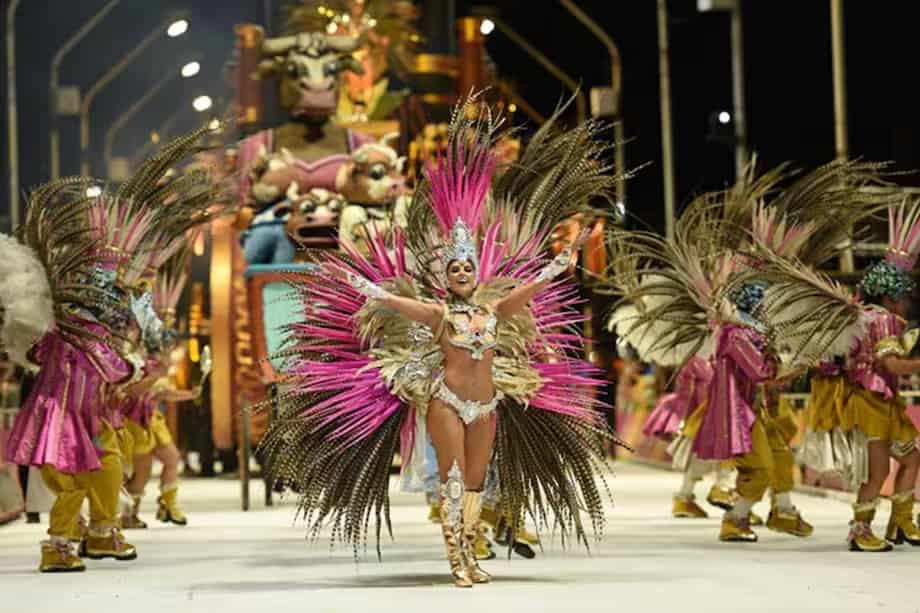Every year, before the start of Lent, Argentina comes alive with the vibrant celebrations of Carnival. In 2025, this joyous festivity will take place on Monday, March 3, and Tuesday, March 4, filling the streets with murgas, parades, performances, and rituals across the country. Thanks to Law 27399, these days are officially recognized as national holidays, allowing everyone to partake in the festivities.
The Origins of Carnival in Argentina
The roots of Carnival in Argentina trace back to Spanish influence and the Christian observance of Lent, a period of reflection and preparation before Easter. In the early 20th century, the tradition grew in popularity, with colorful parades, music, dancing, and elaborate costumes becoming a staple of the celebrations.
One of the most fascinating customs of early Carnival was the playful water games in the streets. People would throw water mixed with various ingredients depending on their relationship with the recipient—lavender for friends and salt for rivals.
Gualeguaychú, now one of the most famous Carnival destinations in Argentina, began its celebrations in 1840. Meanwhile, Buenos Aires hosted its first official parade in 1869, featuring lively comparsas (carnival groups) performing candombe, a dance and music tradition deeply rooted in Afro-Argentine culture.
Evolution of Carnival Throughout History
In the 20th century, Italian and Spanish immigrants reshaped the tradition, leading to the transformation of candombe comparsas into murgas—ensembles that combined drumming, singing, and theatrical performances. The migration of people from Argentina’s provinces and neighboring countries further enriched these traditions, making Buenos Aires a hub for murga culture.
However, during Argentina’s military dictatorship (1976-1983), Carnival was banned, and public celebrations were suppressed. This led to a period of decline, as many traditions were forced underground. Fortunately, with the return of democracy, murgas and parades gradually made their way back to the streets. In 2010, the government officially reinstated Carnival Monday and Tuesday as public holidays, reinforcing the cultural significance of this event.
How is Carnival Celebrated in Argentina?
Carnival in Argentina is a nationwide affair, with each region adding its unique flair to the festivities. Some of the most notable celebrations take place in:
Corrientes: The National Capital of Carnival
The city of Corrientes has been declared the “National Capital of Carnival” due to its grand production featuring dazzling costumes, parades, elaborate floats, and extravagant performances at the Municipal Amphitheater. Comparsas spend months preparing their themed dances and choreography, making each edition of the festival a spectacular event. Other towns in the province, such as Paso de los Libres, Santo Tomé, and Goya, also host lively celebrations.
Entre Ríos: A Province of Festivities
The province of Entre Ríos is home to some of the country’s most famous Carnival events. Victoria is known as the “Provincial Capital of Carnival,” while Concordia, Concepción del Uruguay, and Gualeguaychú offer extravagant celebrations. Gualeguaychú, in particular, is renowned for its Corsódromo, a dedicated venue with a capacity of 35,000 spectators. The city’s festivities span from January to March, attracting thousands of visitors each weekend.
Buenos Aires: The Heart of Murga Culture
Buenos Aires is famous for its vibrant murgas, which take center stage in neighborhood parades. In 2025, the city will host 20 different corsos (parades) featuring over 100 neighborhood-based murgas, inviting both residents and tourists to join in the revelry.
The Andean North: A Blend of Indigenous and Spanish Traditions
Northern provinces, such as Jujuy and Salta, infuse indigenous traditions into their Carnival celebrations. In Jujuy, the Carnival of Humahuaca takes place in the stunning Quebrada de Humahuaca and Tilcara. One of its most symbolic rituals is the “Desentierro del Diablo” (Unburying of the Devil), where participants unearth a symbolic devil figure and make offerings to Pachamama, the Andean Mother Earth deity, before burying it again for the following year.
In Salta, festivities occur across multiple towns. In 2025, the Comparsa Los Alegres del Carnaval and the Comparsa Los Inkas del Tawantinsuyon will lead the celebrations at the city’s Artisan Market. The town of Cerrillos, known as the “Capital of Carnival,” also hosts spectacular events.
A Timeless Celebration of Joy and Culture
Carnival in Argentina is more than just a festival—it is a reflection of the country’s rich cultural heritage, blending indigenous, African, and European traditions into a spectacular display of joy, music, and dance. Whether in the bustling streets of Buenos Aires, the grand parades of Corrientes, or the mystical Andean celebrations of Jujuy, Carnival continues to unite people in a shared expression of creativity and cultural pride.
As Argentina prepares for its 2025 Carnival, the excitement builds for yet another unforgettable celebration, where history, tradition, and festivity come together in a dazzling spectacle.

